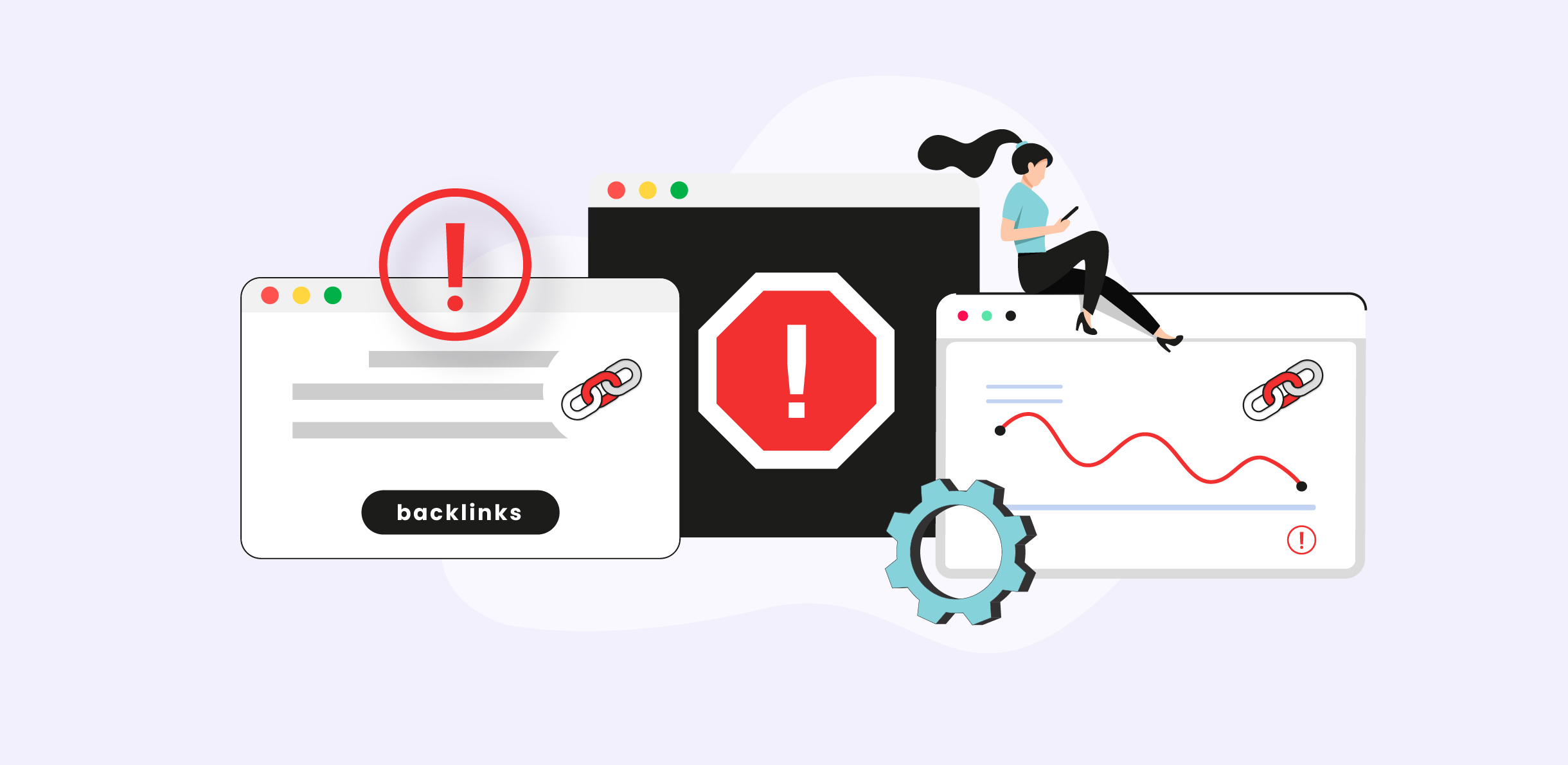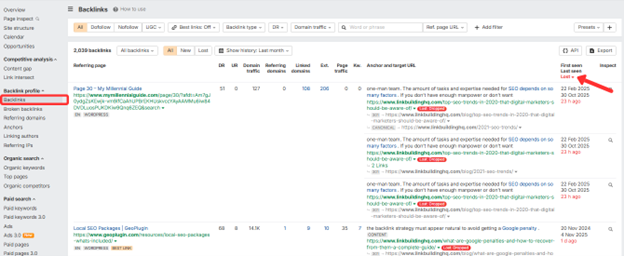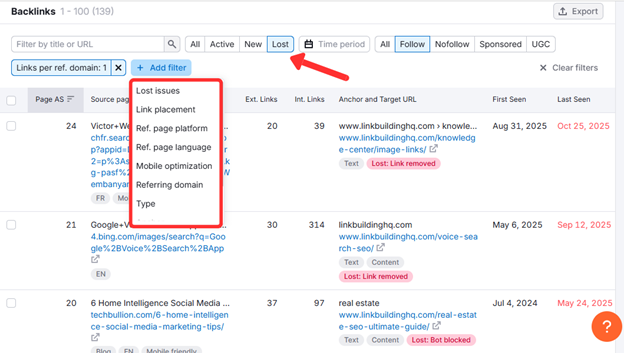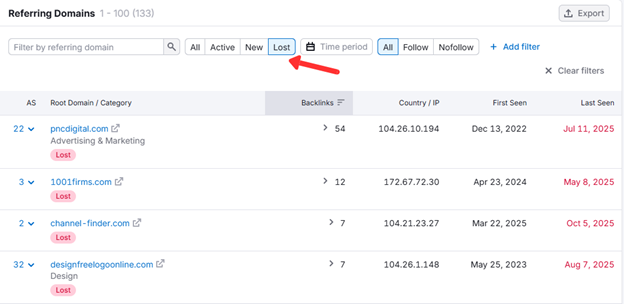Sure, Superman may have escaped the blackhole with just the blow of his mouth in his latest movie, but we’re the SEOs, we can’t always steer clear of the backlink blackholes. What are backlink blackholes, you might ask? It’s the uncharted territory of the link-building world, it’s what pushes your backlinks into an undisclosed space where they can no longer continue to hold value. It’s the reason why most backlinks fail.
To put it simply, it refers to the backlinks you create but can’t track, because they are lost in an unidentified location. Let’s peel further into this topic to understand what backlink blackholes are, how they impact websites and how to fix them.
What is the Backlink Blackhole Theory?
The backlink blackhole theory is not a standard term in SEO, but one that can be used to describe backlinks getting lost over time. It’s an idea inspired by Stephen Hawking’s 1971 black hole area theorem, stating that the total surface area of a blackhole can only increase in size. This is analogous to lost or unfound backlinks in the SEO circles, that, if ignored, will only increase in numbers.
Webmasters believe that if you ignore lost backlinks, they can aggravate the negative implications on your overall ranking potential, which corresponds to the theory above. That is why, it’s important to address their underlying cause and reclaim backlinks in time to save yourself from being the scapegoat to the backlink blackhole theory.
Why Backlinks Fail? The Possible Blackholes In Link Building
So, why do backlinks go down the blackhole portal? There could be many reasons contributing to lost or broken backlinks that no longer send link juice to your domain. Let’s discover some of the possible reasons why backlinks fail.
1. Linking Domains or Re-ownership
An old backlink can suddenly disappear if the linked domain expires or the ownership is transferred. Expired domains happen when website owners fail to pay for a hosting provider.
You can also lose the link if the site owner reallocates ownership to someone else. Naturally, when a website is reused for a different purpose, the existing content will be removed, and as a result your link will disappear as well.
That is why, it’s best to keep a track of all referring domains on your website to identify which ones have expired. Use backlink trackers by Semrush or Ahrefs to review backlinks regularly, or keep a close eye on your GSC dashboard to monitor links sliding down the backlink blackhole in time.
2. Getting Hit By A Penalty
Google has clearly defined white hat SEO practices to help website owners escape penalties. These guidelines are developed to demotivate manipulative tactics used to rank websites.
Impatient webmasters also sometimes resort to these tactics using nefarious methods to rise up the SERPs instantly. They’re called black-hat techniques, and can get you penalized. A domain that violates them may lose rankings or even get completely removed from Google’s index. But a penalty doesn’t just spring out of nowhere, Google sends penalty notices to your search console before proceeding with an action.
It’s best to regularly visit the search console to check for any notices and address issues in time, so Google doesn’t automatically remove low quality, toxic links from your site.
3. 404 Errors
When a page is removed from a site, it results in a 404 error, and any links leading to that page are consequently broken. This is hard luck for referred websites, as it’s typically not a purposeful removal but part of a content restructuring or redesign campaign of the referring website.
404 errors can also make you lose high-value backlinks, so it’s essential to keep an eye on what you’ve lost. Monitor your backlink profile on a monthly or quarterly basis using tools like Ahrefs, Semrush, or Screaming Frog. They track and flag broken links, so you can request a replacement or a new link from referral websites.
4. Making Changes to URL Structure
URL structuring means your backlinks might be redirecting to the wrong page. When you change the URL of a page, any visitors leading there via hyperlinks on referral sites are likely to end up on a dead page or one that doesn’t exist. This breaks the link chain and hinders the flow of link juice across domains.
The best way to address this issue is to apply a 301 redirect for backlinks existing on URLs that have recently been altered. This will automatically redirect crawlers from a dead page to the newly created URL.
5. Too many Ads
When a site starts running excessive Ads on pages you placed backlinks on, it’s likely to get caught up in spam targeting or an algorithm update penalty. This is one of the most common reasons why backlinks fail and websites are left in the storm. Search engines naturally flag sites featuring too many pop-ups or ads because they don’t usually provide a good user experience. Therefore, any links on those pages carry no value or authority, so they’re objectively not even worth acquiring in the first place.
6. Updating Content
We all know search engines prioritize fresh and relevant content, which is why regular content audits and updates are part of any good SEO strategy. When a site upgrades outdated content, it may result in link removal. This can happen for one of two reasons:
- They unknowingly removed the link in the editing process.
- The link no longer fits in the context of the content.
In order to recover backlinks lost with no prior notice, reaching out to the website owner and asking for a replacement is the first step in the reclamation process. Sometimes, the site owner just needs a reminder of the missing link to place it back where it belongs.
7. Broken Partnerships & Collaborations
Backlinks acquired as a result of brand collaborations or joint business ventures are often destined for removal. Why? Because these collaborations and partnerships have to end someday. And then any links placed on those pages will also be taken off.
This is okay as long as the brand continues to allocate effort and resources into building a niche network with high-value industry partnerships. This way, badge and acknowledgement links will keep coming, making up for any lost partnership links.
How To Find & Fix Backlink Blackholes Using Popular Tools
Even if you’ve come across an ultimate link building strategy failure, it’s not the end of the world. Just take a deep breath and get ready for a rebound. It will take time and effort, but will eventually lead to link reclamation. Because, unlike the Superman’s version of a blackhole, backlinks that trickle down the backlink blackhole trail are sometimes recoverable.
Here are some ways to run an audit when you see a significant decline in backlink numbers. These tools can help you identify the cause and cure for lost or failed backlinks.
1. Ahrefs
Ahrefs is a reliable tool to track your backlink profile and review any sudden movement across the site. Here’s how you can use it to find and reclaim lost backlinks.
- On the Site Explorer tab, add your website URL and hit Enter.
- On the left side navigation, find Backlink profile and underneath, Backlinks. Next, filter out the search using the Lost filter. The list will narrow down to give you just the links you’ve lost over time, along with tags to help you identify the reason for loss. In some cases, you may have to visit the referring page to identify the underlying cause for removal. Once that’s sorted, reach out to the webmasters with an email to point out the issue and request a replacement.
- Next, switch over to the Broken Backlinks tab to check all referrals leading to 404 pages. Regaining them is easy with the right communication tactics that convince webmasters to reassign your website’s broken referral link to a different, but related page.
- To get a view of your referring domains, use the Referring Domains tab and apply the Lost filter to check the domains you lost backlinks from. Narrow down the search using the Status option in the filter bar to reorganize data for the reason of loss. This step helps analyze the value of a backlink by trailing its path and exploring the source.
2. Semrush
Running a backlink audit on Semrush should be part of your monthly backlink strategy, as it is simple and takes very little time. Just follow these steps.
- On the Semrush dashboard, find the Backlink Analytics option in the left side navigation bar.
- Enter your domain URL in the search bar and hit Analyze.
- The next page will give you a detailed overview of your backlink profile. From here, go to the Backlinks tab and find the Lost filter.
- Review the list of lost links and analyze the tags to identify which blackhole (reason for lost) your backlinks actually went down to.
- Apply other filters (highlighted in red) to study links by specific placements, languages, and types.
- Deep dive into the analytics to find valuable links lost and apply a backlink reclamation strategy to regain high-quality backlinks.
- One more way to go about this is via the Referring Domains option in the horizontal navigation. Here you can review which domains have removed your links and how important their reclamation is. From here, making decisions for requisition becomes more methodical.
3. Screaming Frog
Screaming Frog is a great resource to uncover all the hidden 404 error pages in your backlink profile.
- Once the software is set up, open and search your website URL.
- The system will start a live crawl and retrieve data for all existing pages on your website. Once done, go to External Sources and filter out the list for 404 errors.
- Review which domains are sending 404 errors on your linked pages and create a list containing all of them.
- Reach out to website owners of each domain to request a fix or replacement.
Next Steps: Applying Link Reclamation Strategy
Now that you’ve identified all unfound or lost backlinks on your site, as well as identified the backlink blackholes they skidded down through, it’s time to apply some fixtures. Here are a few standards that should serve as the perfect foundation for your link reclamation strategy.
- Reorganize links based on the cause for loss of link (removal, 404 error, URL issues, spam penalty, broken partnerships).
- Skip action for backlinks in the last two categories (spam penalty, broken partnerships), unless a partnership is continued and the site has mistakenly removed the link.
- Prioritize backlinks based on three main factors (referring domain’s authority, link relevance, and traffic potential). Transfer high-value links to a different file.
- Find email addresses of each website to kickstart your backlink reclamation process. These may be available in your outreach email list or on the website itself.
- Create an email template and personalize it for each domain to get the best response. Schedule a follow-up for emails you don’t get a response on.
- Eventually, the links will start coming back. Monitor backlink profile regularly to check for sudden decline in backlink numbers, ensuring there are no surprises in the later stages of backlink audits.
And that’s it from our guide on why backlinks fail and fall into blackholes as well as how to reclaim them. To maintain a clean and balanced profile, make sure all links come from relevant sources.
Don’t just stick with the same referring sources, a diverse link profile is usually more preferable in the eyes of search crawlers. We recommend acquiring different types of backlinks from various domains to live up to the need for diversity in the backlink profile.











